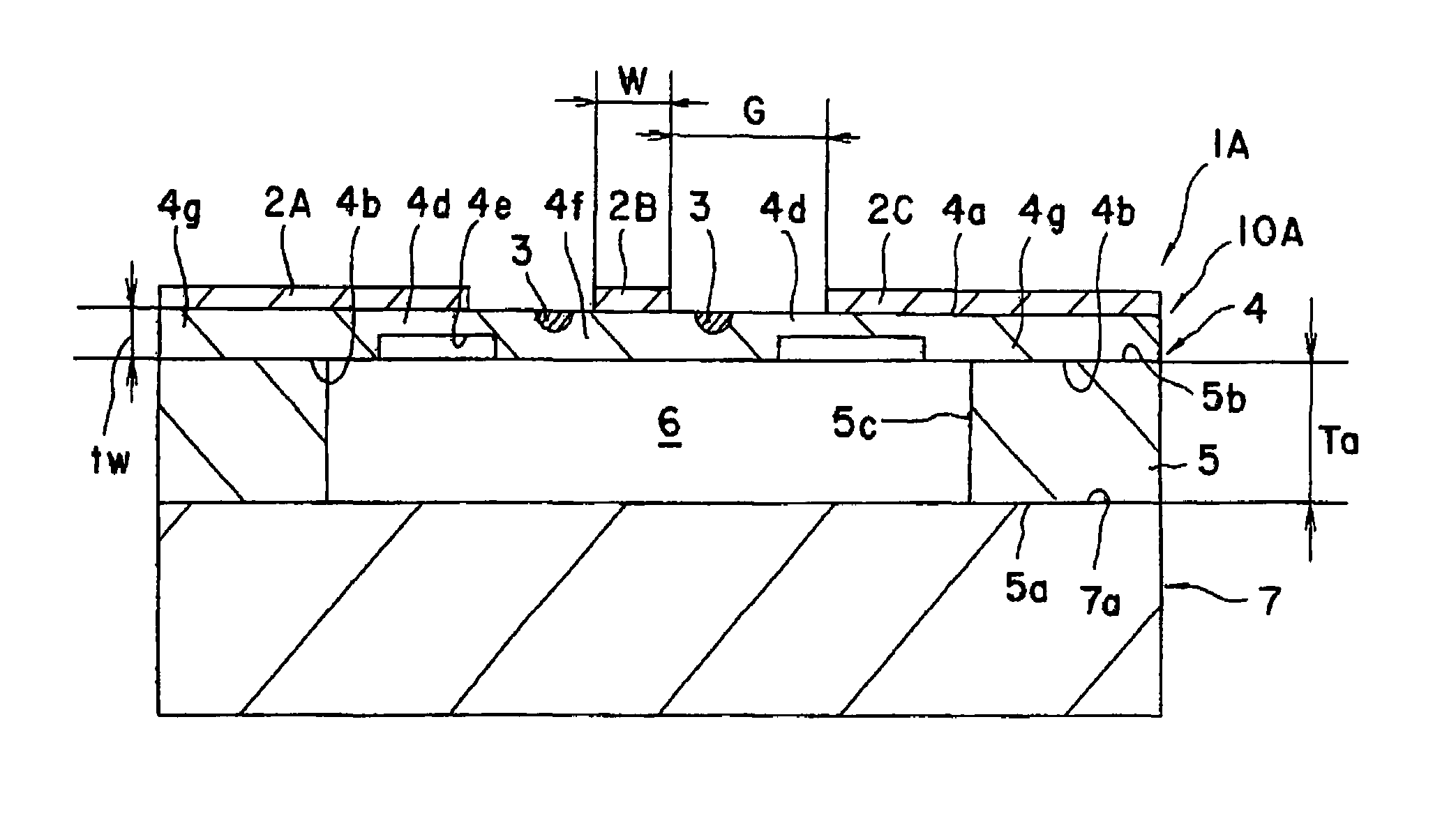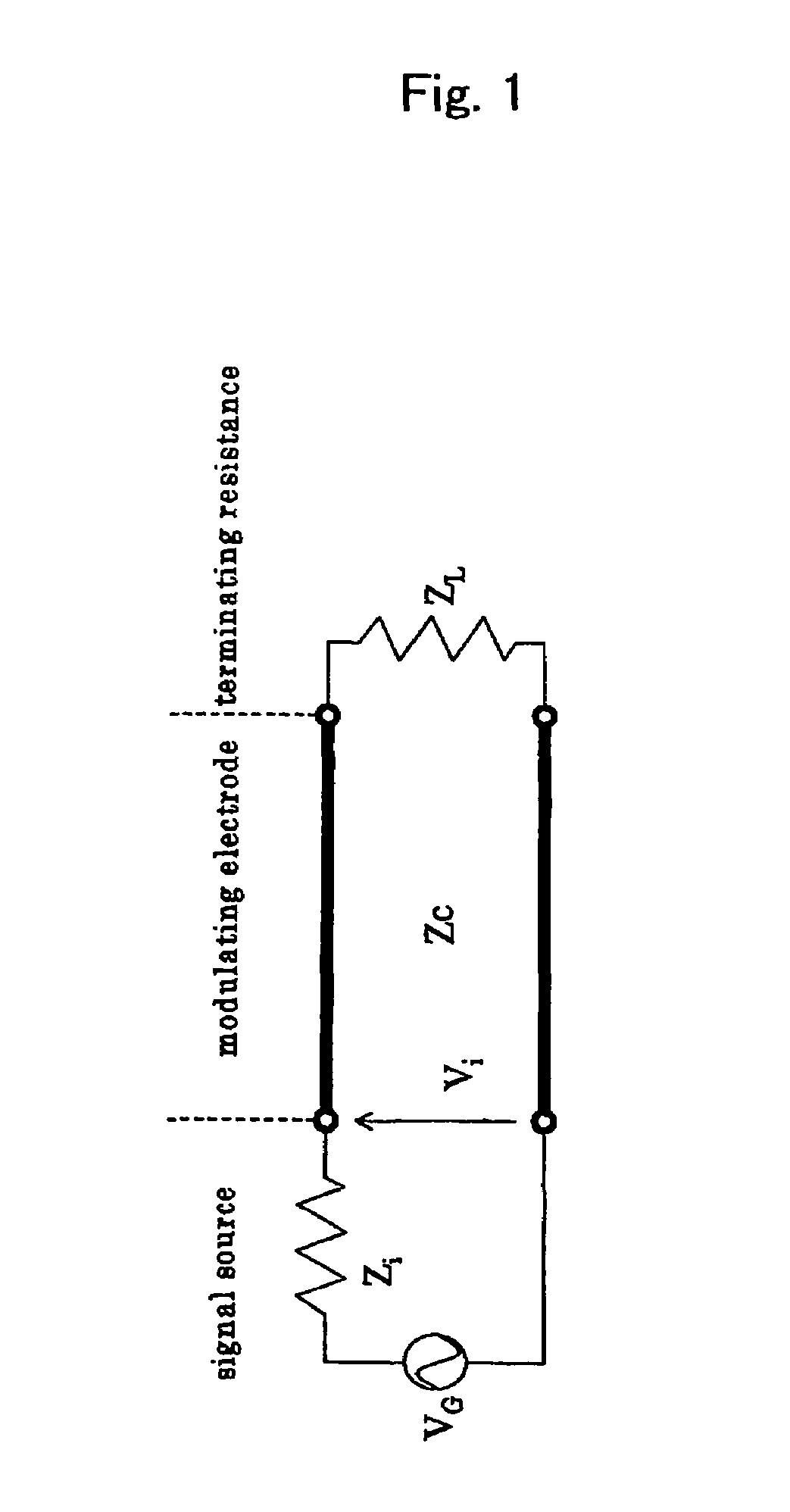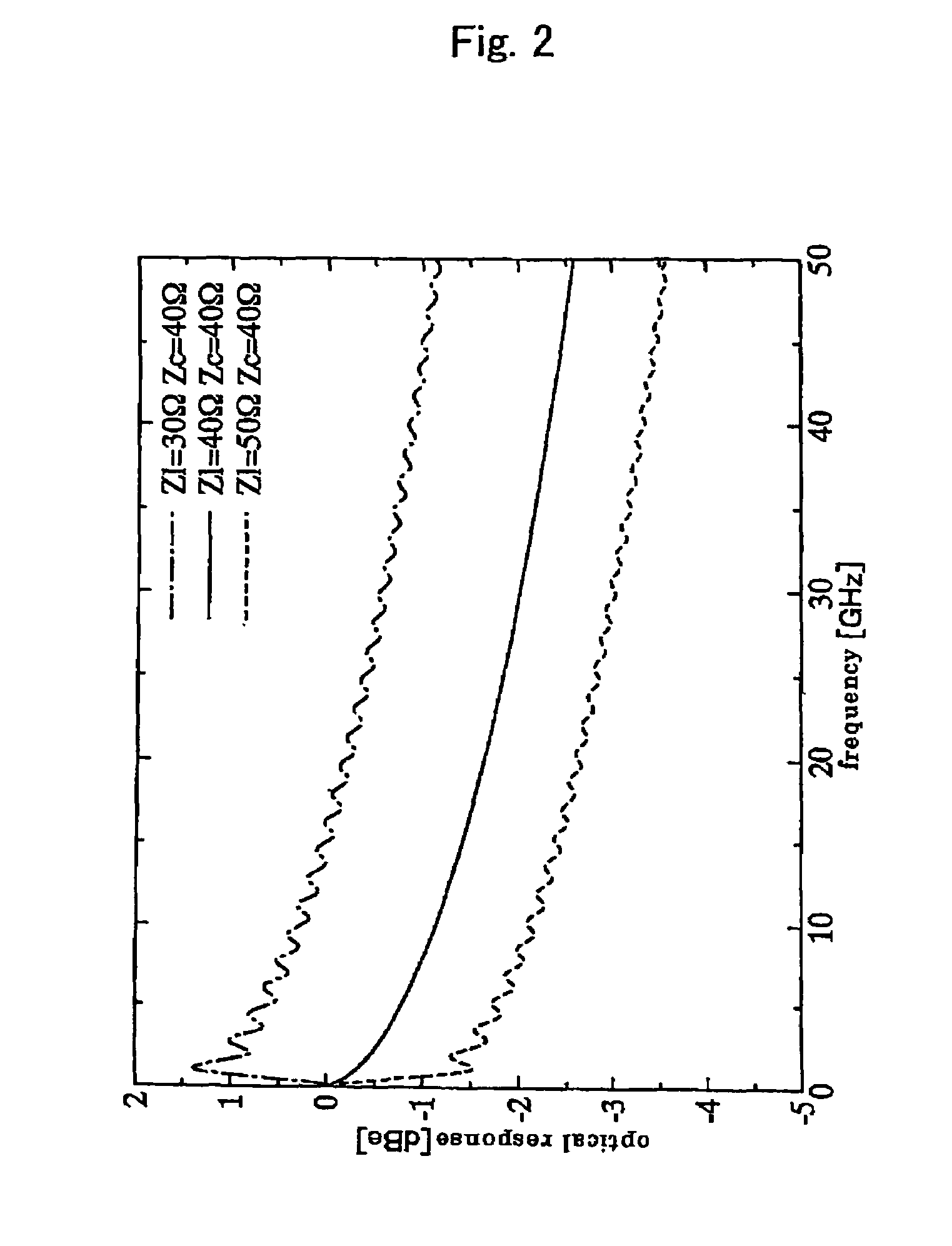Optical modulators
a technology of optical modulators and feedthrough portions, applied in non-linear optics, instruments, optics, etc., can solve the problems of low modulation efficiency, improve the microwave characteristic, increase the characteristic impedance of the feedthrough portion, and improve the microwave characteristic
- Summary
- Abstract
- Description
- Claims
- Application Information
AI Technical Summary
Benefits of technology
Problems solved by technology
Method used
Image
Examples
examples
[0080](Production)
[0081]An optical modulator 1B shown in FIG. 6 was produced. An X-cut 3 inch wafer (made of LiNbO3 single crystal) was used as a substrate. An optical waveguide 3 of Mach-Zehnder type was formed in the surface area of the wafer by titanium diffusion and photolithography. The size of the optical waveguide 3 may be set at, for example, 10 μm at 1 / e2. The above described CPW electrode pattern was formed by electroplating.
[0082]A resist film was coated onto the one main face (surface) of the wafer-shaped bulk for the main body. The bulk was then adhered with a base substrate made of lithium niobate using a thermoplastic resin. The back face 4b of the main body was then subjected to horizontal polishing, high speed lapping and polishing (CMP). The thickness of the resulting main body was measured by means of a topographic measuring instrument, so that a desired thickness was obtained.
[0083]A sheet having a thickness of 50 μm and made of an epoxy thermosetting resin was s...
PUM
| Property | Measurement | Unit |
|---|---|---|
| thickness | aaaaa | aaaaa |
| thickness | aaaaa | aaaaa |
| thickness | aaaaa | aaaaa |
Abstract
Description
Claims
Application Information
 Login to View More
Login to View More - R&D
- Intellectual Property
- Life Sciences
- Materials
- Tech Scout
- Unparalleled Data Quality
- Higher Quality Content
- 60% Fewer Hallucinations
Browse by: Latest US Patents, China's latest patents, Technical Efficacy Thesaurus, Application Domain, Technology Topic, Popular Technical Reports.
© 2025 PatSnap. All rights reserved.Legal|Privacy policy|Modern Slavery Act Transparency Statement|Sitemap|About US| Contact US: help@patsnap.com



